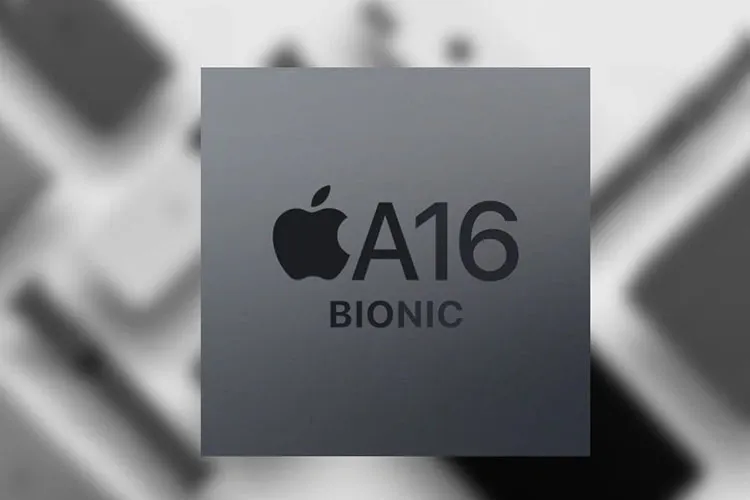The smartphone market is constantly evolving and mobile processors are one of the most important elements that determine the performance and functionality of a phone. Two of the most popular processors on the market today are Qualcomm’s Snapdragon 8 Gen 2 and the Apple A16 Bionic. In this article, we’ll compare these two processors and determine which one is better in terms of performance, functionality, and power efficiency.
| Samsung Galaxy S23 256GB | |
 | $1,199.99 |
Snapdragon 8 Gen 2 vs A16 bionic – Performance

The Snapdragon 8 Gen 2 features an octa-core processor with a maximum clock speed of 3.2 GHz. It also has an Adreno 740 GPU, which offers exceptional graphics performance for games and demanding applications. On the other hand, the Apple A16 Bionic is equipped with a hexa-core processor with a maximum clock speed of 3.46 GHz. It is similarly equipped with a custom Apple GPU, which offers higher graphics performance than competing mobile graphics processors.
In terms of raw performance, the Apple A16 Bionic is slightly better than the Snapdragon 8 Gen 2 due to its higher clock rate. And also, Apple’s processors tend to be more efficient at handling tasks, which means that even with a hexa-core processor, the A16 Bionic can deliver a smoother and more responsive user experience.
Snapdragon 8 Gen 2 vs. A16 bionic – Features

The Snapdragon 8 Gen 2 is 5G-enabled and supports 6E Wi-Fi connections, which means it can handle extremely fast download and upload speeds, as well as minimal latency for online gaming and video calling. In addition, the Snapdragon 8 Gen 2 supports cameras up to 200 MP, as well as 8K video recording.
The Apple A16 Bionic, meanwhile, also features an advanced security chip, the Secure Enclave, which stores sensitive information such as biometrics and passwords. It also supports the TrueDepth camera, which enables facial recognition for unlocking the phone and AR (augmented reality) features.
In terms of functionality, it’s hard to determine a clear winner between these two processors. It all depends on the individual preferences of the user and which features they consider most important.
Snapdragon 8 Gen 2 vs. A16 bionic – Energy efficiency

Power efficiency is a crucial element for mobile processors, as it determines battery life and user experience. The Snapdragon 8 Gen 2 uses a 4nm manufacturing process, which is similar to the 4nm manufacturing process of the Apple A16 Bionic. In addition, the Snapdragon 8 Gen 2 features an intelligent power saving mode that can dynamically adjust processor performance based on workload to optimize battery life.
For its part, the Apple A16 Bionic uses a sophisticated power management technology that maximizes energy efficiency while maintaining high performance. This technology is called the Neural Engine, which intelligently manages tasks and distributes them among different processor cores based on their level of complexity. This approach minimizes power consumption while maximizing performance.
In terms of power efficiency, the Apple A16 Bionic is a bit ahead of the Snapdragon 8 Gen 2. However, the gap isn’t very large, as both processors are very efficient and offer decent battery life for everyday use.
Snapdragon 8 Gen 2 vs A16 bionic – Gaming

Mobile games are becoming increasingly performance intensive and require a powerful processor to run smoothly. In this category, Qualcomm’s Snapdragon 8 Gen 2 has a slight advantage over the Apple A16 Bionic in terms of raw performance. However, the Apple A16 Bionic uses more sophisticated power management technology, which can provide a longer and more stable gaming experience.
Ultimately, the choice between the two processors will depend on your personal preferences and how you plan to use your device. If you’re a hardcore gamer and want the best performance possible, the Snapdragon 8 Gen 2 may be the best choice for you. If you’re looking to maximize battery life, the Apple A16 Bionic might be a better choice.
Snapdragon 8 Gen 2 vs. A16 bionic – Image Processing

Image processing, whether it’s photography, photo editing or video, is a very performance-intensive task, as it requires a large amount of computation to process the image data. In this category, the Apple A16 Bionic is slightly ahead of the Snapdragon 8 Gen 2, thanks to its Neural Engine, which enables intelligent task management and optimal workload distribution.
If you’re a professional photographer or regularly work with high-quality images, the Apple A16 Bionic will likely be the best choice for you, as it offers more efficient power management and faster, more reliable performance for image processing.
Snapdragon 8 Gen 2 vs A16 bionic – Battery

Battery life is an important factor for many smartphone users, as it directly affects how long the device can be used. Both processors, Snapdragon 8 Gen 2 and Apple A16 Bionic, are very efficient in terms of battery life, but they have different approaches to achieving it.
Qualcomm’s Snapdragon 8 Gen 2 uses a raw performance approach to deliver high performance, but this can have a negative impact on battery life. In contrast, the Apple A16 Bionic uses a more efficient approach to power management, which maximizes energy efficiency while maintaining high performance.
If you’re looking to maximize battery life, the Apple A16 Bionic is probably the best choice for you. However, if you’re a power user and need high performance for tasks like gaming or image processing, the Snapdragon 8 Gen 2 might be a better choice.
Which is better in the end?
At the end of the day, Qualcomm’s Snapdragon 8 Gen 2 and the Apple A16 Bionic are both excellent mobile processors, each with their own pros and cons. The Snapdragon 8 Gen 2 offers slightly better raw performance and supports features such as 5G and 200 MP camera, while the Apple A16 Bionic is more efficient in terms of task handling and power efficiency.
The choice between these two processors depends on many factors, including the user’s individual preferences, the features that are most important to them and the available budget. In any case, it is important to note that both processors are extremely powerful and offer an exceptional user experience, making them two of the best mobile processors currently available on the market.
Read Also :
